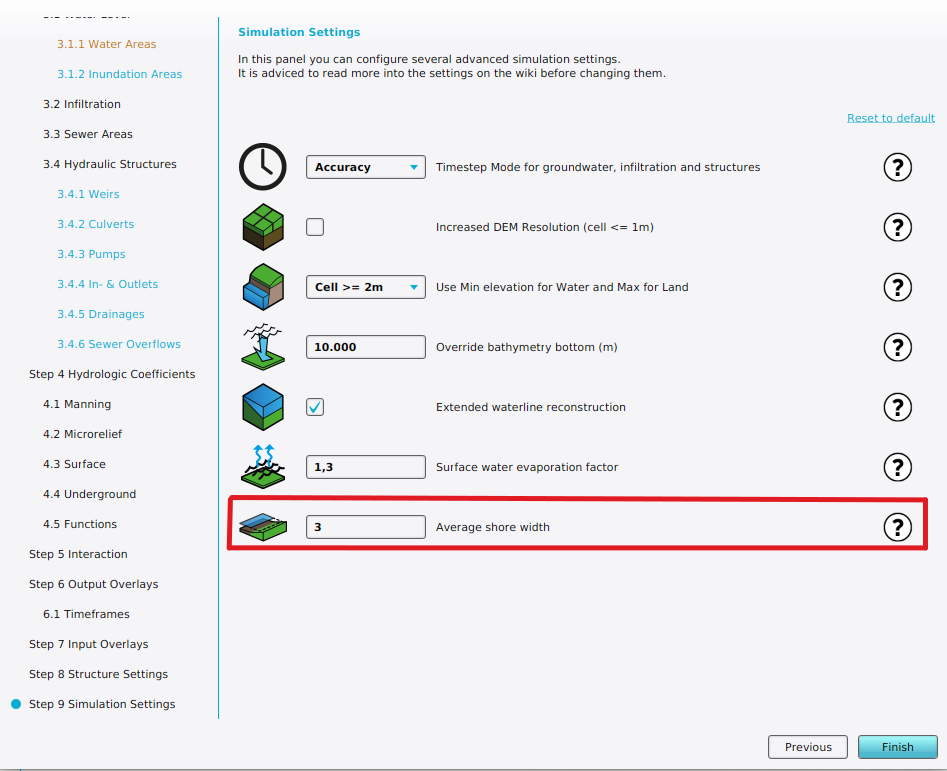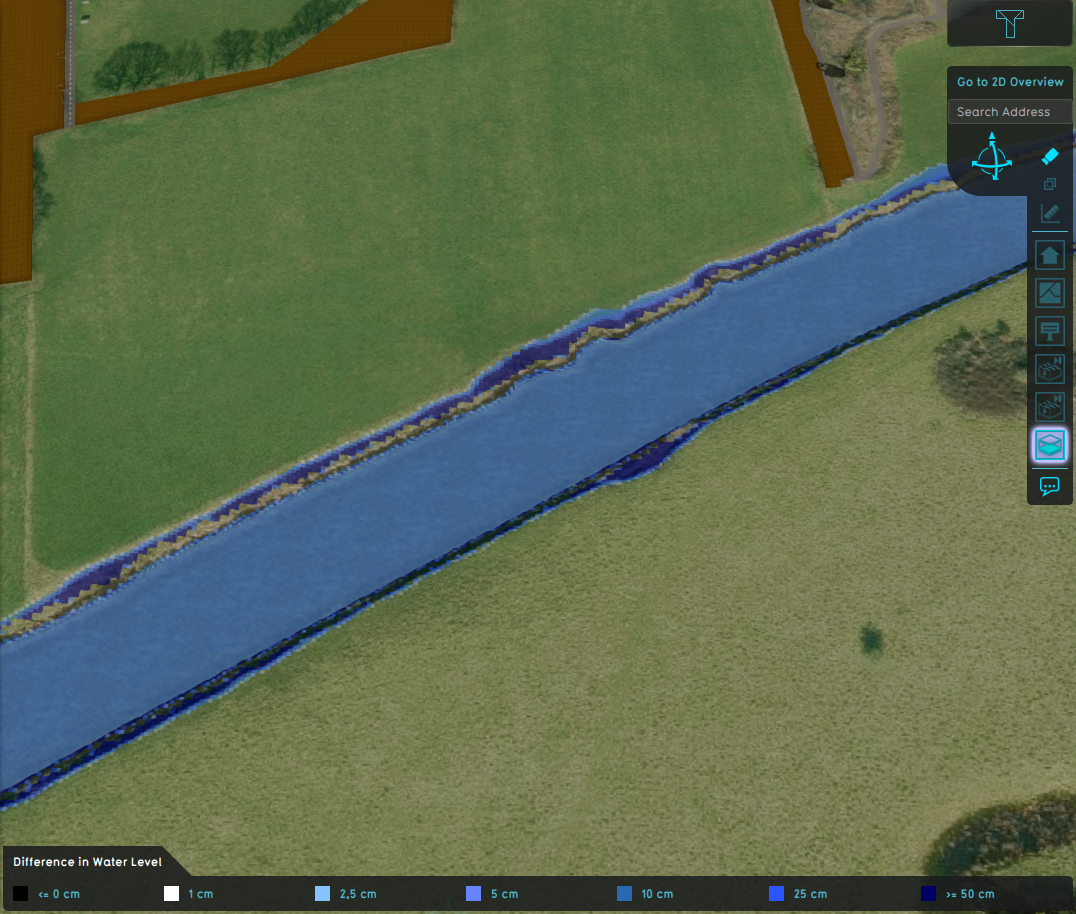Avg shore width m (Water Overlay): Difference between revisions
Jump to navigation
Jump to search
Created page with "{{Overlay attributes|<onlyinclude> {{Overlay attributes|type=row|overlay=Water |attribute=AVG_SHORE_WIDTH_M |unit=length |description=With the surface water mode set to Grid..." |
No edit summary |
||
| (18 intermediate revisions by 3 users not shown) | |||
| Line 1: | Line 1: | ||
[[File:Wateroverlay_wizard_avg_shore_width.png|thumb|right|Average shore width can be configured in the Simulation Settings step.]] | |||
{{Overlay attributes|<onlyinclude> | {{Overlay attributes|<onlyinclude> | ||
{{Overlay attributes|type=row|overlay=Water | {{Overlay attributes|type=row|overlay=Water | ||
|attribute=AVG_SHORE_WIDTH_M | |attribute=AVG_SHORE_WIDTH_M | ||
|unit= | |unit=m | ||
|description=With the surface water mode set to Grid Averaging, identified water average areas can be extended to include nearby shorelines within the configured distance. | |description=With the surface water mode set to Grid Averaging, identified water average areas can be extended to include nearby shorelines within the configured distance. | ||
|defaultvalue=3 | |||
|range=0 to 10000 [[grid cell]]s | |||
|icon=waterwizard_icon_avg_shore_width_m.png | |||
}}</onlyinclude>}} | }}</onlyinclude>}} | ||
Water polygons supplied by | Water polygons supplied by Geo data often do not include the shorelines around it, which could still contain water due to overflowing. Additionally, shorelines are important for the interaction between ground water and water ways. | ||
<gallery mode=nolines widths=300px heights=200px> | |||
File:Wateroverlay_avg_shore_width_3m.png|[[Water Overlay]] set to [[Surface water (Water Overlay)|Grid Averaging Waterways]] and a configured average shore width of 3m. | |||
File:Wateroverlay_avg_shore_width_10m.png|[[Water Overlay]] set to [[Surface water (Water Overlay)|Grid Averaging Waterways]] and a configured average shore width of 10m. | |||
File:Wateroverlay_difference_waterlevel_avg_shorewidth.png|Difference in [[Surface last value result type (Water Overlay)|water level]]. | |||
</gallery> | |||
{{article end | {{article end | ||
|notes= | |notes= | ||
* This option is only used when the [[Surface | * This option is only used when the [[Surface water (Water Overlay)|surface water mode]] is set to Grid Averaging. | ||
* As indicated by the range, the average shore width is converted to a grid cell amount; the average shore width is divided by the [[grid cell size]]. | |||
|howtos= | |howtos= | ||
* [[How to add and remove an Attribute]] | * [[How to add and remove an Attribute]] | ||
Latest revision as of 16:05, 29 January 2024

| Icon | Attribute | Unit | Range | Description | Default value |
|---|---|---|---|---|---|
| |
AVG_SHORE_WIDTH_M | m | 0 to 10000 grid cells | With the surface water mode set to Grid Averaging, identified water average areas can be extended to include nearby shorelines within the configured distance. | 3 |
Water polygons supplied by Geo data often do not include the shorelines around it, which could still contain water due to overflowing. Additionally, shorelines are important for the interaction between ground water and water ways.
-
Water Overlay set to Grid Averaging Waterways and a configured average shore width of 3m.
-
Water Overlay set to Grid Averaging Waterways and a configured average shore width of 10m.
-
Difference in water level.
Notes
- This option is only used when the surface water mode is set to Grid Averaging.
- As indicated by the range, the average shore width is converted to a grid cell amount; the average shore width is divided by the grid cell size.







